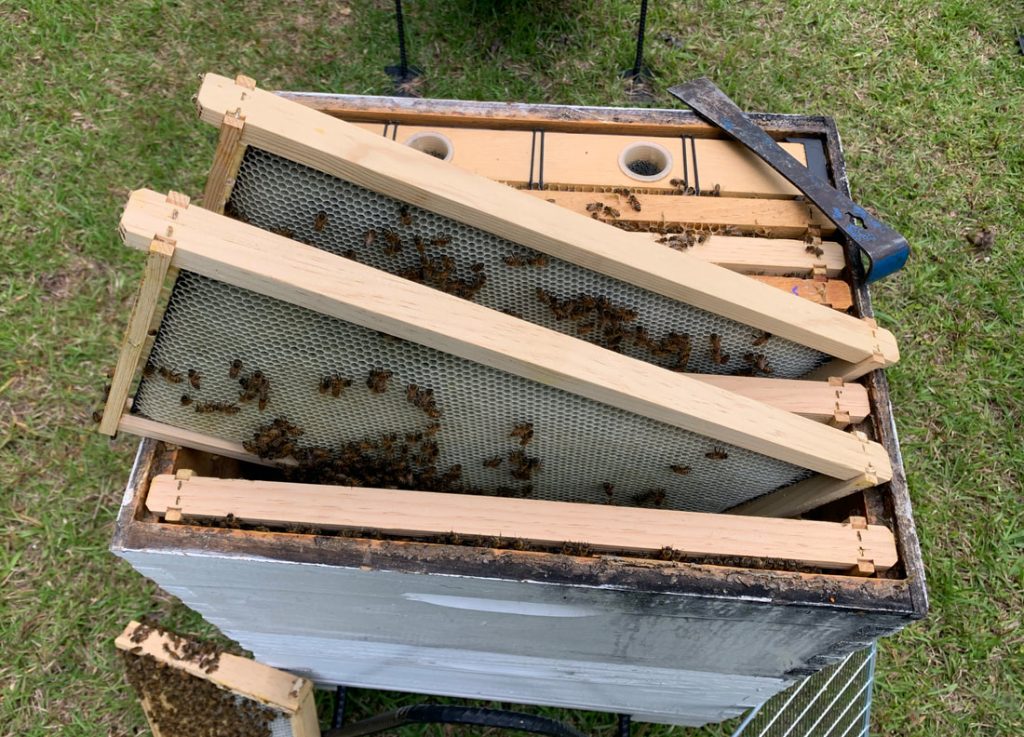Add Your Data Point to the Map: Take the BIP Survey!

You may have heard the statement “all beekeeping is local”. This means that, depending on where you keep bees, your beekeeping actions for a particular month could be drastically different than what is appropriate for beekeepers located elsewhere! During April, some beekeepers might be busy with tasks like installing packages and raising queens, while others might be using the mild days to crack lids on their colonies even while there’s snow on the ground. Regardless of what other tasks you are trying to accomplish this April, we hope you will find time to fill out our annual Honey Bee Colony Loss and Management Survey!

Beekeepers caring for honey bee colonies in warmer areas of the country may already be finished making splits, and have their colonies currently building up fresh, white wax while foraging on spring nectar flows. Others who are located in areas where spring comes later may have just taken stock of winter survival and addressed any early-spring need for feed. Your observations about what is happening in your unique bee yard location – from losses, to environmental conditions, to management actions taken – are what we are asking you to shed light on in this year’s edition of the Bee Informed Partnership’s annual Loss and Management Survey.
While the focus area of last year’s Survey – “Queens and New Colonies” – was suitable for the spring survey season, this year’s topic is very spring-appropriate too! This time around, the major focus of the Survey is “Nutrition and Environment”.
There is a lot of nutritional and environmental information that we would love to put on a map! Two of our goals are to map the progress of seasonal conditions and your management actions. For example, in this year’s survey we’re asking you about the pollen and nectar flows your bees experience throughout the year, as well as what time of year you begin to make splits. As spring progresses, we would expect to see on the map a front of colony-splitting starting in the southern and coastal US, and moving northward and inland over time, like a wave. We also hope to map the large-scale migrations of colonies that occur between states. Many beekeepers move their colonies across state borders to make use of several honey flows or pollinate crops. But exactly where do they go and when? By mapping those movements, we aim to gain a better understanding of migratory beekeeping patterns.
In all our surveys, we ask you for some basic geographical information (i.e., your ZIP code). The reason for this is to get a rough idea of where your observations and management actions are taking place. With this year’s Survey focusing on “Nutrition and Environment”, your answer to this question is especially important! But we want you to know that when we make these beautiful beekeeping maps, we will, as always, only show (and report) a group-level summary of the data. This means that your specific location, or any other details we have collected about your operation will not be individually identifiable.
So, if you have a gap in your schedule, maybe as a result of three days of back-to-back rain, we really hope that you will please consider filling out the Survey – and let your fellow beekeepers nearby know about it as well! They may be experiencing the same soggy spring weather, sitting idle, wishing they could be out in the bee yard. Give them a call and suggest they fill out the Survey on their rain day instead!
We appreciate your participation and thank you for promoting the Bee Informed Partnership annual Colony Loss and Management Survey through your beekeeper networks. Every answer counts!
This blog was originally posted on 4/11/22 and shared here (with permission) for the Bee Health Collective audience.
Authored By: Dan Aurell, Selina Bruckner, Geoff Williams, and Nathalie Steinhauer, and shared on behalf of the Bee Informed Partnership.